
by Paul | Mar 4, 2023 | Spirulina blog
 Spirulina is a blue-green algae that has gained popularity in recent years for its numerous health benefits. While it is commonly consumed by humans, spirulina can also be a beneficial supplement for pets. In this blog, we will explore the health benefits of spirulina for pets and how it can be incorporated into their diet.
Spirulina is a blue-green algae that has gained popularity in recent years for its numerous health benefits. While it is commonly consumed by humans, spirulina can also be a beneficial supplement for pets. In this blog, we will explore the health benefits of spirulina for pets and how it can be incorporated into their diet.
What is Spirulina?
Spirulina is a nutrient-dense superfood that is high in protein, vitamins, minerals, and antioxidants. It is commonly consumed as a dietary supplement by humans, and is also suitable for pets. Spirulina is available in various forms, including powder, tablets, and capsules.
Health Benefits of Spirulina for Pets
- Immune System Support
Spirulina is rich in antioxidants, which help to protect cells from damage caused by free radicals. Free radicals can contribute to the development of diseases, including cancer. By incorporating spirulina into your pet’s diet, you can help to support their immune system and reduce the risk of disease.
- Digestive Health
Spirulina is high in fiber, which can help to improve digestion and reduce the risk of constipation. Additionally, spirulina is rich in prebiotics, which are beneficial for promoting the growth of healthy gut bacteria. This can help to improve your pet’s digestive health and reduce the risk of digestive issues.
- Joint Health
Spirulina is rich in anti-inflammatory compounds, which can help to reduce inflammation in the joints. This can be beneficial for pets with joint issues, including arthritis. Additionally, spirulina is high in essential fatty acids, which are important for maintaining joint health.
- Skin and Coat Health
Spirulina is high in vitamins and minerals that are important for maintaining healthy skin and coat. It is particularly rich in vitamin A, which is essential for skin health. Additionally, spirulina is high in omega-3 fatty acids, which can help to improve the appearance and texture of your pet’s coat.
How to Incorporate Spirulina into Your Pet’s Diet
Spirulina can be incorporated into your pet’s diet in several ways. The powder can be added to their food or mixed with water to make a paste. Additionally, spirulina tablets and capsules are available and can be given as a supplement. It is important to follow the recommended dosage guidelines and consult with your veterinarian before incorporating spirulina into your pet’s diet.
In conclusion, spirulina is a beneficial supplement for pets due to its numerous health benefits, including immune system support, digestive health, joint health, and skin and coat health. By incorporating spirulina into your pet’s diet, you can help to support their overall health and wellbeing.
 One study published in the Journal of Animal Science found that spirulina supplementation improved the growth rate, feed conversion ratio, and nutrient digestibility in young horses. The study concluded that spirulina may be a beneficial supplement for promoting growth and improving nutrient absorption in horses.
One study published in the Journal of Animal Science found that spirulina supplementation improved the growth rate, feed conversion ratio, and nutrient digestibility in young horses. The study concluded that spirulina may be a beneficial supplement for promoting growth and improving nutrient absorption in horses.
Another study published in the Journal of Equine Veterinary Science found that spirulina supplementation improved immune system function and reduced inflammation in horses. The study concluded that spirulina may be a useful supplement for improving immune system health and reducing the risk of inflammatory conditions in horses.
While these studies show promising results, more research is needed to fully understand the health benefits of spirulina for horses. It is important to consult with a veterinarian before incorporating spirulina or any other supplement into your horse’s diet. Additionally, it is important to ensure that the spirulina supplement is of high quality and free from any contaminants that may be harmful to horses. Royal Spirulina is pure without contaminants. Royal Spirulina NEW! Freeze Dried
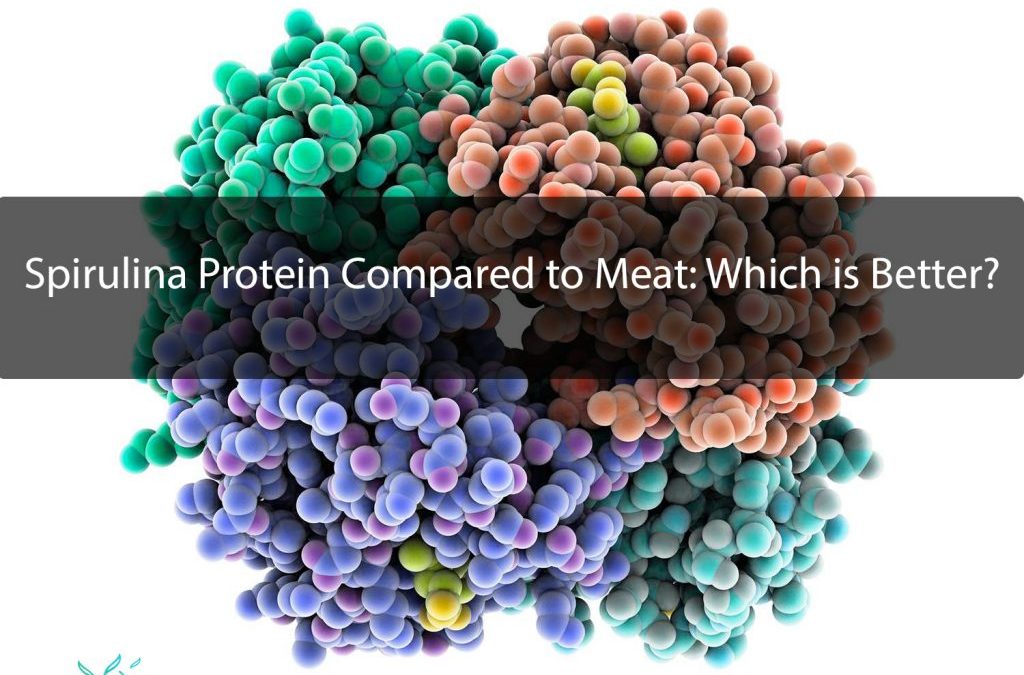
by Paul | Mar 3, 2023 | Spirulina blog
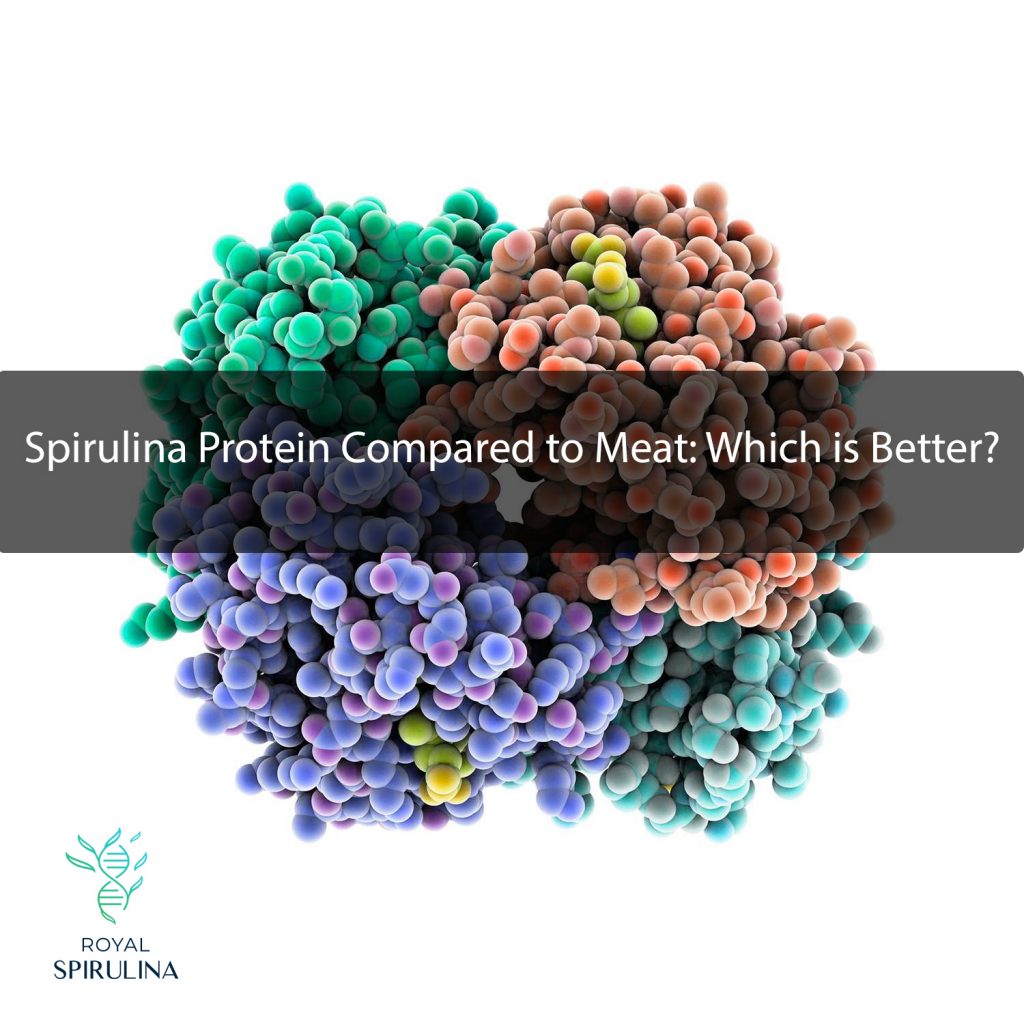
Spirulina Protein Compared to Meat: Which is Better?
Protein is a crucial nutrient for the human body, as it is necessary for building and repairing tissues. While many people associate protein with meat, there are also plant-based sources of protein, such as spirulina. Spirulina is a type of blue-green algae that is incredibly nutritious and contains a high amount of protein. In this blog, we will explore the benefits of spirulina protein compared to meat protein.
Protein Content
When it comes to protein content, spirulina is a winner. While the protein content of meat varies depending on the type and cut of meat, spirulina contains about 60-70% protein, making it one of the most protein-dense foods available. In comparison, beef contains about 25% protein, chicken contains about 20% protein, and fish contains about 18% protein.
Amino Acid Profile
Protein is made up of amino acids, which are the building blocks of protein. There are nine essential amino acids that the body cannot produce on its own and must be obtained through the diet. While meat is a complete protein source, meaning it contains all nine essential amino acids, spirulina is also a complete protein source, containing all nine essential amino acids in the right proportions.
Bioavailability
Bioavailability refers to how well the body can absorb and use the protein in a food. While meat protein is highly bioavailable, spirulina protein is even more so. This is because spirulina is a plant-based protein, which means it is more easily digested by the body than animal-based protein. This makes spirulina protein an excellent option for people with digestive issues or those who want to maximize their protein absorption.
Cholesterol and Fat
One of the downsides of meat protein is that it often comes with a high amount of cholesterol and fat. This can be a problem for people with high cholesterol or heart disease. On the other hand, spirulina is a low-fat, cholesterol-free food, making it an ideal protein source for people with these health concerns.
Environmental Impact
Finally, it is worth noting that meat production has a significant impact on the environment, from the resources required to raise and feed the animals to the waste produced by their consumption. In contrast, spirulina is a sustainable food source that can be grown in freshwater ponds with minimal resources.
| Food |
Protein content per 100g |
| Spirulina |
60-70g |
| Beef |
25g |
| Chicken |
20g |
| Fish |
18g |
As you can see, spirulina has a significantly higher protein content compared to meat, making it an excellent protein source for those looking to increase their protein intake.
Some reasons why spirulina protein is considered healthier than meat protein:
- Low in Fat: Spirulina is a low-fat food, with only about 3% of its calories coming from fat. In contrast, meat can be high in saturated and trans fats, which can increase the risk of heart disease and other health problems.
- Cholesterol-Free: Spirulina is cholesterol-free, making it a great protein source for people with high cholesterol or heart disease.
- High in Nutrients: Spirulina is loaded with nutrients, including vitamins, minerals, and antioxidants. These nutrients help support overall health and may provide additional benefits beyond just protein.
- Sustainable: Spirulina is a sustainable food source that requires minimal resources to produce, making it a more environmentally-friendly option compared to meat production.
- Easily Digested: Plant-based protein sources like spirulina are generally more easily digested by the body compared to animal-based protein sources like meat. This means that the body can absorb and use the protein in spirulina more efficiently.
Overall, spirulina protein is a healthy and sustainable alternative to meat protein. It is low in fat and cholesterol, high in nutrients, and easily digested by the body.
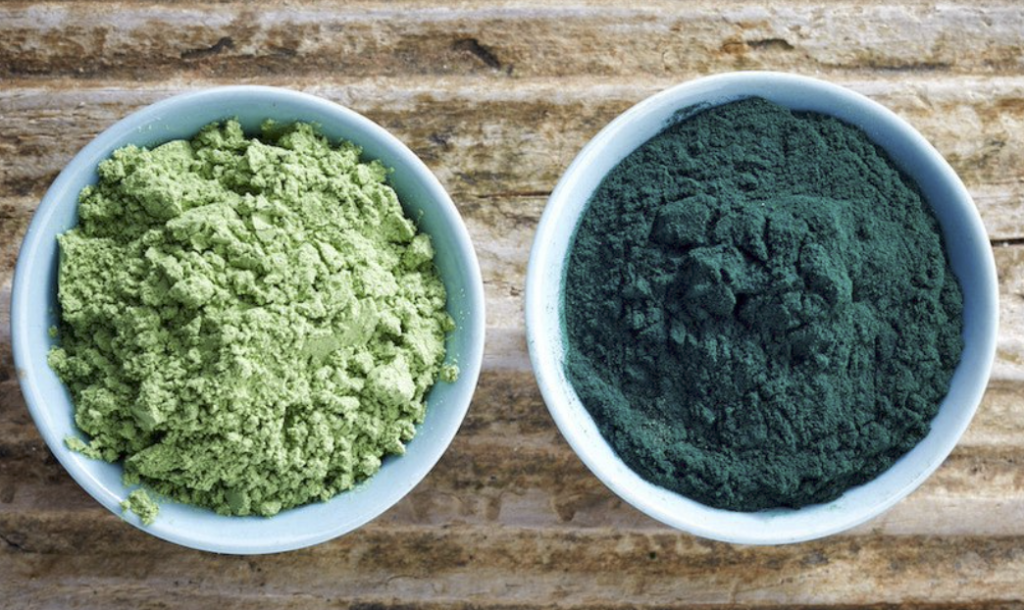
by Paul | Mar 3, 2023 | Spirulina blog

Spirulina and wheatgrass are both popular dietary supplements that have gained popularity due to their potential health benefits. Spirulina is a type of blue-green algae, while wheatgrass is the young grass of the wheat plant. Both are touted for their high nutrient content, but how do they compare in terms of actual nutrients? In this blog, we’ll take a closer look at spirulina nutrients and wheatgrass, and compare them side-by-side with the help of some charts.
Spirulina Nutrients – Royal Spirulina is grown in a controlled environment giving higher nutrients than what is normally posted online including this post. For more info on Royal Spirulina please visit Royal Spirulina NEW! Freeze Dried
Spirulina is often called a “superfood” due to its high nutrient content. Here are some of the key nutrients found in spirulina:
- Protein: Spirulina is a rich source of protein, containing all essential amino acids. In fact, it is one of the few plant-based sources of complete protein.
- Vitamins: Spirulina is a good source of several vitamins, including vitamin A, vitamin K, and several B vitamins.
- Minerals: Spirulina is a rich source of minerals, including iron, magnesium, and potassium.
- Antioxidants: Spirulina is high in antioxidants, such as phycocyanin, which may help protect against oxidative damage in the body.
Wheatgrass Nutrients
Wheatgrass is also considered a “superfood,” and is often consumed in juice form. Here are some of the key nutrients found in wheatgrass:
- Chlorophyll: Wheatgrass is rich in chlorophyll, a green pigment that is similar in structure to hemoglobin. Chlorophyll may help support healthy blood function and improve digestion.
- Vitamins: Wheatgrass is a good source of several vitamins, including vitamin A, vitamin C, and vitamin E.
- Minerals: Wheatgrass is a good source of minerals, including iron, calcium, and magnesium.
- Antioxidants: Wheatgrass is high in antioxidants, such as flavonoids and phenolic acids, which may help protect against oxidative damage in the body.
Comparing Spirulina Nutrients and Wheatgrass Nutrients
To get a clearer picture of how spirulina and wheatgrass compare in terms of nutrients, let’s take a look at the following charts:
Chart 1: Nutrient Comparison – Spirulina vs. Wheatgrass
| Nutrient |
Spirulina (per 100g) |
Wheatgrass (per 100g) |
| Nutrient |
Spirulina |
Wheatgrass |
| Calories |
290 |
19 |
| Protein |
57.5 g |
2.2 g |
| Fat |
7.7 g |
0.2 g |
| Carbohydrates |
23.9 g |
3.4 g |
| Fiber |
3.6 g |
0.9 g |
| Sugar |
3.1 g |
0 g |
| Calcium |
12 mg |
24 mg |
| Iron |
5 mg |
0.6 mg |
| Magnesium |
195 mg |
22 mg |
| Phosphorus |
118 mg |
49 mg |
| Potassium |
1363 mg |
218 mg |
| Sodium |
1043 mg |
12 mg |
| Zinc |
2 mg |
0.4 mg |
| Vitamin C |
10.1 mg |
17 mg |
| Thiamin |
2.4 mg |
0.1 mg |
| Riboflavin |
3.6 mg |
0.1 mg |
| Niacin |
12.8 mg |
0.6 mg |
| Vitamin B6 |
0.4 mg |
0.1 mg |
| Folate |
94 mcg |
30 mcg |
| Vitamin A |
68000 IU |
1458 IU |
| Vitamin E |
5 mg |
0.2 mg |
| Vitamin K |
25.5 mcg |
176.9 mcg |
Chart 2: Protein Comparison – Spirulina vs. Wheatgrass
Royal Spirulina is rated at 67% – Product nutritional lab results – Spirulina Powder Lab Results
Based on the above comparison, it’s clear that spirulina is more nutritionally dense than wheatgrass. Spirulina is a richer source of protein, vitamins, and minerals compared to wheatgrass.
In terms of protein content, spirulina contains 57g of protein per 100g, whereas wheatgrass contains only 2g per 100g. This makes spirulina an excellent source of protein for vegetarians and vegans, as it contains all the essential amino acids.
Spirulina is also a rich source of iron, containing 28mg per 100g, which is more than forty times the amount of iron found in wheatgrass. Iron is important for maintaining healthy blood cells and preventing anemia. Spirulina is also high in potassium, containing 1363mg per 100g, which is more than six times the amount found in wheatgrass. Potassium is essential for maintaining healthy blood pressure and heart function.
Moreover, spirulina is a better source of vitamins compared to wheatgrass. Spirulina contains more vitamin A, vitamin C, vitamin E, and vitamin K than wheatgrass. Vitamin A is important for healthy vision, while vitamin C and E act as antioxidants to protect against oxidative damage in the body. Vitamin K plays a crucial role in blood clotting and bone health.
Lastly, spirulina has a unique nutrient called phycocyanin, which gives it its blue-green color. Phycocyanin is a powerful antioxidant that may help reduce inflammation in the body and support overall health. Wheatgrass, on the other hand, doesn’t contain phycocyanin.
In conclusion, while wheatgrass is certainly a healthy food choice, spirulina is the better choice if you’re looking for a nutrient-dense food. Spirulina provides a wider range of vitamins and minerals, as well as a significant amount of protein, iron, and potassium. Spirulina can be consumed in a variety of ways, including as a supplement, powder, or even in smoothies. It’s an excellent option for anyone looking to improve their overall health and nutrition.
As you can see, spirulina is much richer in protein, fat, and vitamins compared to wheatgrass. Spirulina is also a great source of GLA, which is an essential fatty acid that can have anti-inflammatory effects. Wheatgrass, on the other hand, is a great source of fiber, which is important for digestive health. Additionally, wheatgrass contains chlorophyll, which is a powerful antioxidant that may have anti-cancer properties.
Overall, both spirulina and wheatgrass are nutrient-dense foods that can provide a range of health benefits. Spirulina is a great source of protein, vitamins, and minerals, while wheatgrass is rich in fiber, chlorophyll, and enzymes. Incorporating both of these foods into your diet can be a great way to boost your overall nutrition and support your health.
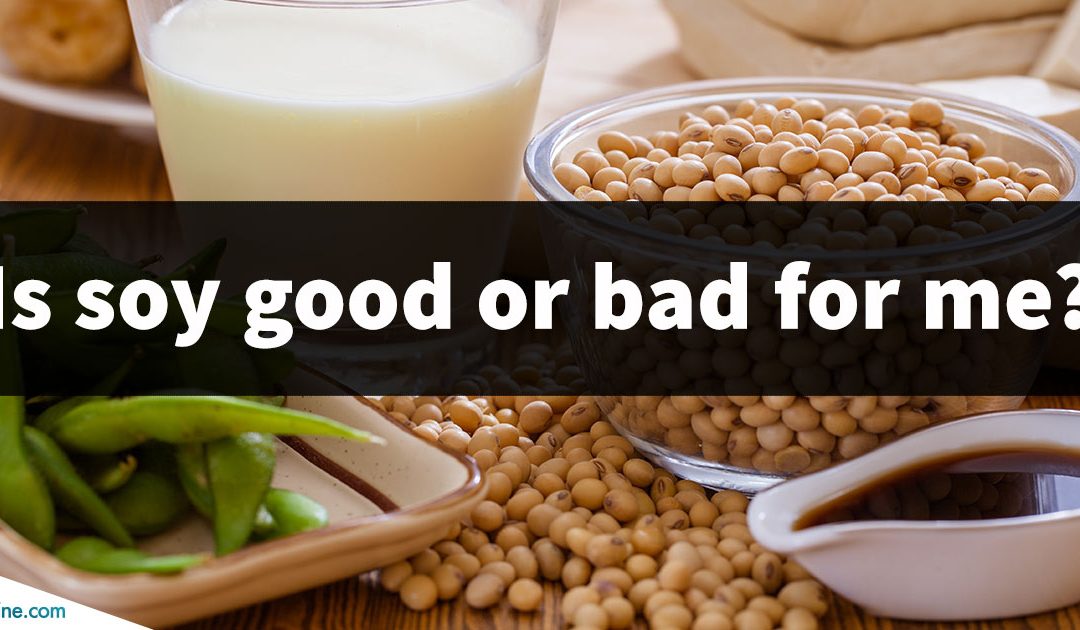
by Paul | Mar 1, 2023 | Spirulina blog
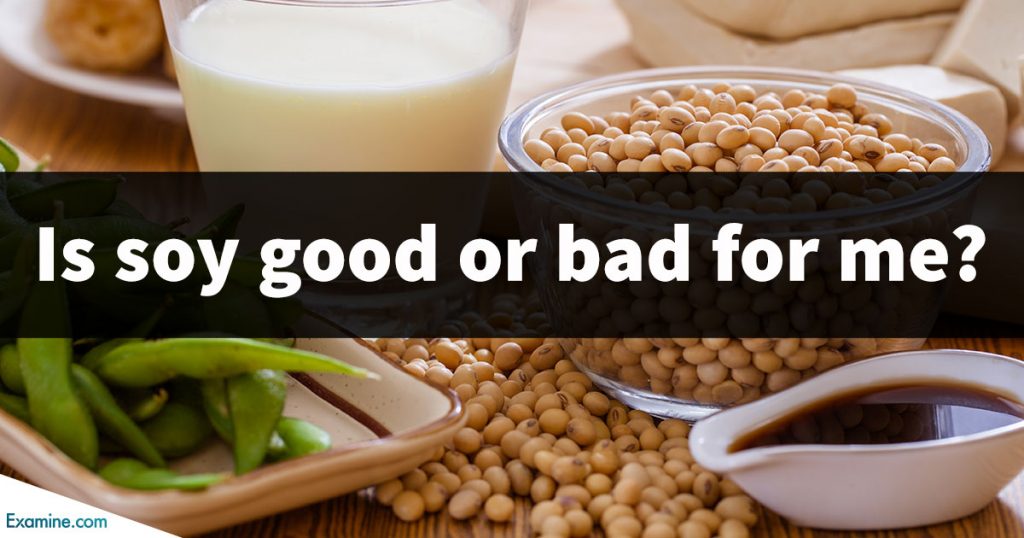 Is Soy Healthful – – or Dangerous?
Is Soy Healthful – – or Dangerous?
Soy products have been praised as the leading “health” food of the era. With the rising concerns about contamination and disease in animal products, more people are turning to soy.
On one hand we hear claims of its benefits to cardiovascular health, breast cancer prevention, cholesterol lowering effects and even prevention of osteoporosis and menopausal symptoms.
On the other hand, reports of potentially dangerous effects of soy are surfacing, dampening enthusiasm for the widespread use of these products.
So what is the real story?
Components of soy, including isoflavones, phytates and saponins are said to have strong antioxidant activity and help prevent the formation of free radicals that contribute to arterial damage.
One of these isoflavones, genistein, is said to prevent blood clots that may lead to a heart attack by inhibiting thrombin formation and platelet activation, two steps in the formation of a clot. Other components of soy are said to restrict the growth of blood vessels that feed cancerous tumors, thus inhibiting the growth of the cancer.
Some studies have demonstrated that soy contains anti-carcinogenic factors that decrease the risk of a number of different cancers such as breast, colon, prostate, stomach and lung cancer.
These are advantageous effects, even though some scientific investigators admit there is a downside. Yet the consensus among the researchers is that the benefits of soy outweigh the risks. But must we look at soy products the same way doctors evaluate drugs, by saying, “Yes, there are significant harmful side effects, but the benefits outweigh the risks”?
This is nonsense!
Regular food in its natural state is healthful-NOT dangerous! Natural food is meant to be our natural medicine. If healthful food in its natural state does not agree with us, then there is something wrong with our immune system that needs to be corrected by getting the entire body back in proper working condition.
The first problem with soy is that it is rarely eaten in its natural state because its natural state is unpalatable. For years, it was considered to be either an industrial product, or a waste product.
In order to make it fit for human consumption, the soybeans are first ground and subjected to high temperature and solvent extraction processes, mixed with an alkaline solution to remove fiber, then precipitated and separated using an acid wash. The resultant curds are neutralized in an alkaline solution before being spray-dried at high temperatures. Then flavorings, preservatives, sweeteners, emulsifiers and synthetic nutrients are added to make it palatable to the human consumer.
On October 25, 1999, the U.S. Food and Drug Administration (FDA) announced their decision to allow a health claim for products “low in saturated fat and cholesterol” that contain 6.25 grams of soy protein per serving. That means that hundreds of products, including breakfast cereals, baked goods, convenience food, sausages and other processed meats, vegetarian meat substitutes and smoothie mixes could now be sold with labels touting their health benefits. The only requirement is that these products must contain one heaping teaspoon of soy protein per
100-gram serving.
What a coup for the soy growers and marketers who have spent huge sums of money “educating” the public about the wonders of soy products! Yet, in 1913, soy was listed not as a food, but as an industrial product in the U.S. Department of Agriculture (USDA) handbook.
Presently, 72 million acres of American farmland are planted with soybeans.
However, two senior government researchers at the National Center for Toxicological Research, Dr. Daniel Doerge and Dr. Dan Sheehan, wrote a strong protest letter to the FDA citing 28 studies that demonstrate the toxic effects of soy. They revealed that chemicals in soy products could increase the risk of breast cancer in women, brain damage in men and abnormalities in infants.
But, soybean marketers have plenty of funds available to manipulate public opinion. All soybean producers pay a mandatory assessment of one-half to one per cent of the net market price of soybeans, totaling nearly $80 million annually, that is used to “strengthen the position of soybeans in the marketplace and maintain and expand domestic and foreign markets for uses for soybeans and soybean products.” Archer Daniels Midland, reportedly one of the three corporations that control virtually all the food growing and distribution in America, spent during the course of One year, $4.7 million for soy-product advertising on Meet the Press and $4.3 million on Face the Nation.
These efforts have had a huge payoff. Soy milk sales in 1980 were $2 million. By 1999 they had skyrocketed to $300 million. Clearly, the public is responding to this expensive media blitz by the soy producers.
But soy definitely has a downside! First of all, the soybean contains large quantities of natural toxins including phytic acid or phytate that can block the action of trypsin and other enzymes needed for digestion of protein. These enzyme inhibitors are not completely inactivated during ordinary cooking. They can cause gastric distress and reduce protein digestion leading to a deficiency of amino acids, the building blocks of protein.
In test animals, diets high in trypsin inhibitors cause the pancreas to become enlarged and even cancerous changes can occur. Phytic acid can also block the normal uptake in the intestinal tract of essential minerals such as calcium, magnesium, copper, iron and zinc.
Studies show that these soybean phytates are highly resistant to the techniques that usually reduce them, that is long, slow cooking. Only a long period of fermentation will reduce the phytate content of soybeans to an acceptable level, as is done in the case of the soy products, miso and tempeh.
Soybeans contain hemagglutinin, a clot-promoting substance that causes red blood cells to clump together. These clusters of blood cells cannot absorb oxygen properly, nor flow through the smallest arteries, the capillaries.
In 1991, Japanese researchers reported that consumption of as little as 30 grams, or two tablespoons, of soybeans per day for only one month resulted in hypothyroidism and goiter in some subjects, with many others complaining of constipation, fatigue and lethargy. The amount of soy protein isolate claimed to have cholesterol-lowering effects, contains significantly more isoflavones than that necessary to cause a reduction in hormones needed for adequate thyroid function. In the studies, these effecis persisted for three months after soy consumption was discontinued.
Protein Technologies International recommends 100 grams of soy protein as the maximum suggested cholesterol-lowering dose. This amount contains almost 600 mg of isoflavones, a quantity that is admittedly toxic. This same amount of soy protein provides the estrogen equivalent of the birth control pill, according to the Swiss health service.
Reproductive problems, infertility, thyroid disease and liver disease due to dietary intake of isoflavones have been observed for several species of animals including mice, cheetah, quail, pigs, rats, sturgeon and sheep.”
Dangers of Soy Protein.
Fermentation apears to significantly reduce or eliminate the harmful substances present in soy. The fermented soy products miso and tempeh are considered safer than tofu and bean curd, both of which are precipitated products and are the ones to be specifically avoided. But miso and tempeh are still highly processed and therefore are not part of the ten-step Natural Health Plan, promoted in this workbook.
Dr. Russell Blaylock, neurosurgeon and author of the book Excitotoxins: The Taste That Kills, reveals that tofu contains MSG, a known neurotoxin that contributes to many neurological diseases including Parkinson’s, Alzheimer’s and Lou Gehrig’s disease.
Since all the protein any person needs is available from natural, unprocessed, whole foods, it is unnecessary and unwise for anyone with any serious disease to use soy products.
WRITTEN BY DR LORRAINE DAY
DRDAY.com


 Spirulina is a blue-green algae that has gained popularity in recent years for its numerous health benefits. While it is commonly consumed by humans, spirulina can also be a beneficial supplement for pets. In this blog, we will explore the health benefits of spirulina for pets and how it can be incorporated into their diet.
Spirulina is a blue-green algae that has gained popularity in recent years for its numerous health benefits. While it is commonly consumed by humans, spirulina can also be a beneficial supplement for pets. In this blog, we will explore the health benefits of spirulina for pets and how it can be incorporated into their diet. One study published in the Journal of Animal Science found that spirulina supplementation improved the growth rate, feed conversion ratio, and nutrient digestibility in young horses. The study concluded that spirulina may be a beneficial supplement for promoting growth and improving nutrient absorption in horses.
One study published in the Journal of Animal Science found that spirulina supplementation improved the growth rate, feed conversion ratio, and nutrient digestibility in young horses. The study concluded that spirulina may be a beneficial supplement for promoting growth and improving nutrient absorption in horses.




 Is Soy Healthful – – or Dangerous?
Is Soy Healthful – – or Dangerous?
Recent Comments